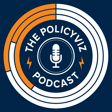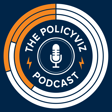
Data for a Continent: Inside the European Correspondent’s Visual Journalism
In this episode, I chat with Mandy Spaltman and Sebastian Graeff, co-leads of the data team at The European Correspondent, a volunteer-driven journalism initiative covering news across Europe. They discuss how their team of passionate designers and analysts craft daily data visualizations, their creative process, the tools they use, and the challenge of maintaining a cohesive style while allowing artistic freedom. Hear how they balance storytelling and design, and what the future might hold for interactive and multilingual content.
Keywords: data, data visualization, European Correspondent, data visualization, journalism, infographics, storytelling, media startup, volunteer, creative process, visual design, newsletters, Europe
Subscribe to the PolicyViz Podcast wherever you get your podcasts.
Become a patron of the PolicyViz Podcast for as little as a buck a month
Check out the European Correspondent!
Follow me on Instagram, LinkedIn, Substack, Twitter, Website, YouTube
Email: jon@policyviz.com


